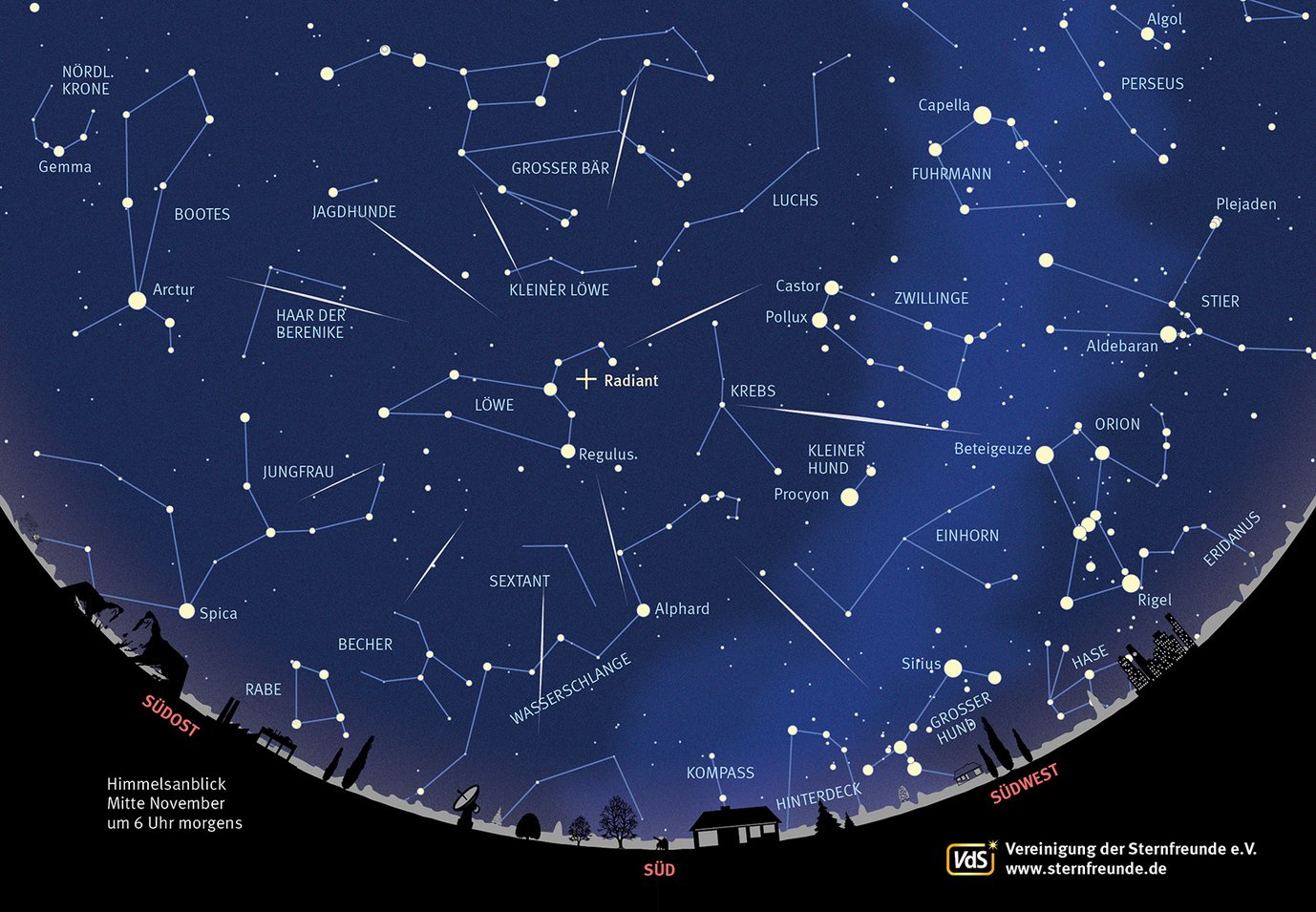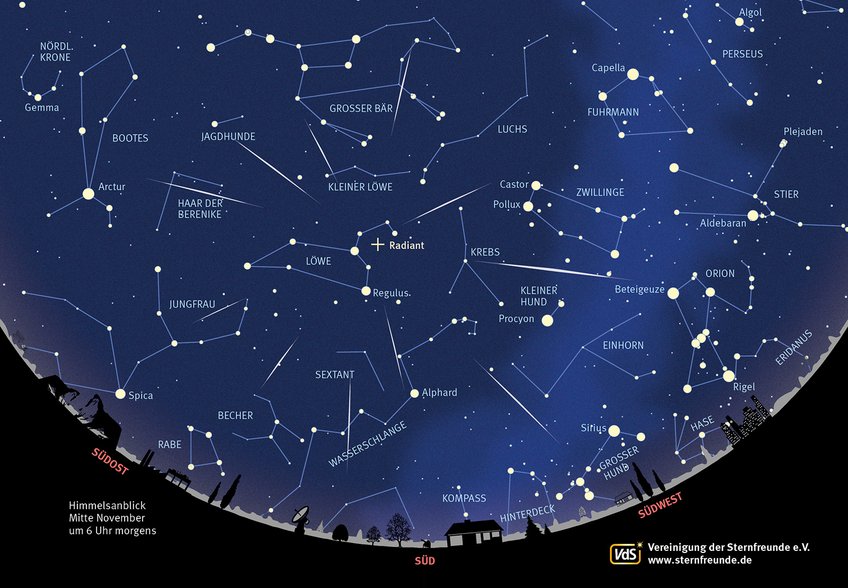Fast, bright and rare: the Leonid meteors
Every year in mid-November the Earth crosses the path of comet 55P/Temple-Tuttle on its orbit around the Sun. Particles of the comet collide with the Earth's atmosphere and produce shooting stars. The number of meteors is quite low with 10 to 15 per hour, but among them are often very bright shooting stars. In 2022 there could also be a second meteor shower.
Comet 55P/Temple-Tuttle was discovered on 19 December 1865. It orbits the Sun once in 33 years. Currently, the comet is far away from the Sun. When it is near the Sun, however, incredible meteor storms can take place - last time in the years around the turn of the millennium and the next time starting in 2033.

This year's maximum of the Leonids occurs in the night from 17 to 18 November. The shooting stars seem to originate from the constellation Leo, their point of emission is a a few degrees above Regulus, the brightest star in Leo. Leo rises only after midnight, therefore the second half of the night is best suitable for observing meteors. To do this, look to the east - just this night the waning Moon is in Leo, so you can easily orient yourself. Unfortunately, however, the Moon brightens the sky; faint shooting stars will therefore hardly be visible.
With 10 to 15 shooting stars the Leonids are not a rich stream, however especially bright meteors appear again and again. And they are very fast shooting stars with 70 kilometers per second. According to model calculations, the Earth could pass through a denser part of the comet's trail on the morning of 19 November, when up to 50 meteors per hour are expected. Leo is already high in the south, and the moon has moved a bit further into the constellation Virgo. If you get up early, you may be able to watch a special shooting star spectacle before dawn on 19 November 2022.
